AquilA
uniVersity preparatory academy

“the Weight oF carrying on”



“the Weight oF carrying on”

DESIGN BY ZAHRA SHAIKH
Snuggled up in pajamas with snacks and mugs of hot cocoa in hand, come with us and navigate through our newest release, Volume XV, Issue 2, every detail of which is presented by our very dutiful Aquila team. As chaotic as it was, this issue was particularly special due to the addition of our ambitious first years who were unafraid to jump right into our journalism family and boldly report on an extensive variety of topics. There may be a lot of things that keep us up at night, but our team of journalists is not one of them.
Current or rising seniors, on the other hand, might be up all night worrying about all sorts of college-related struggles. We’ve got your back! In “FAFSA Changes” on page 7, reporter Tasneem Elsayed delves into the changes in the FAFSA program and what our upcoming seniors need to look out for with these adjustments to hopefully ease their minds and help them get some shut-eye.
But perhaps you may be kept up by other issues, such as feeling excluded from your cultural communities. Reporter Haania Anwar explores students’ outlooks on losing or never learning their native languages. Discover how missing a seemingly key piece of our identity and culture affects our development in “

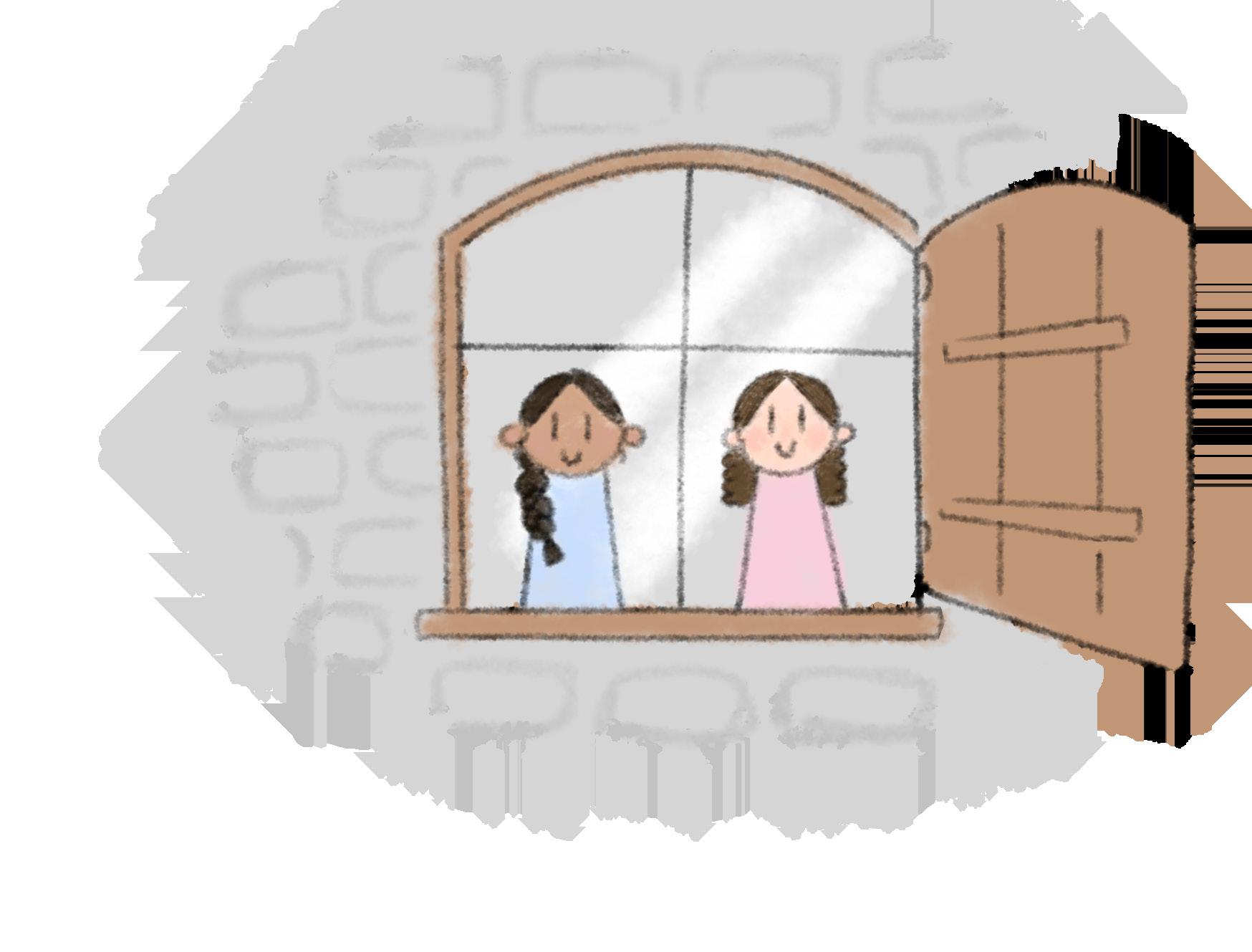
Reporter Lynette Tran provides detailed insight into the multitude of ways our Earth is in trouble in “Our Fragile Future”. Read her advice on page 15 on what we can do to help our Earth in order to appease our worries and help us get some rest.
But why else do we lie awake at night despite our deep need for snoozing? Sleep itself, the act that helps us to function and fuels us to take on our busy UPA schedules and all the stresses of life. In “Counting Sheep” on page 19, reporter Juliann Jaison dives into the deep problem of sleep debt and how we can overcome flawed sleep schedules that prevent us from leading the healthiest lives possible.
Ah Christmas, the most restful time of the year and the time to get rid of all our sleep debt. Right? No? Well, reporter Miles Hines investigates the changes and stressors in our lives that make Christmas feel different than it used to in our youth. Read about students’ nostalgia regarding the festive season (or lack thereof) in “Melting Memories” on page 27.
Whether you can’t sleep because of homework, or because you’re binge-reading the latest issue of the Aquila (as you should be), we believe this issue will give you a lot to reflect on going into this new year. We hope you enjoy reading it as much as we enjoyed producing



Aquila is a student-produced, student-edited high school newsmagazine. It serves as a designated public forum for student expression. We aim to reflect the diversity of our community and build unity through true and accurate reporting, in hopes that each of our readers will find an article they can connect with.





“soarIng
From the shift of a black and white newspaper to a vibrant newsmagazine, to a broadcast channel and an active Instagram presence, we continue to innovate the way we tell stories and elevate our publication to new horizons. We do this not just because we are student journalists but because reaching for success is what it means to be a member of Aquila.

Have a story to share? Scan the QR Code to submit your suggestions or email us at aquila@upatoday.com.

The front cover features a silhouette of a student in distress, a symbol for the overwhelming presence of past trauma in everyday life. It was shot and designed by Samira Madden and Lena Nguyen. Read “The Weight of Carrying on” on page 22.


Angel Froumis Editor-in-Chief

Samira Madden Multimedia Manager

Hanna Lubinsky Copy Editor

Aubrey Phung Team Editor
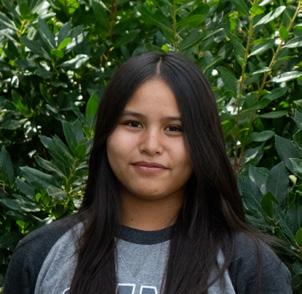
Kara Luayon Design Editor

Sneha Madan Editor-in-Chief

Miles Hines Multimedia Shadow
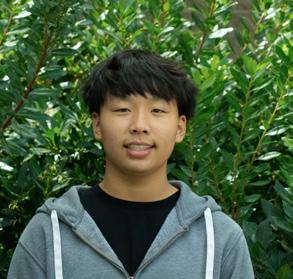
Jayden Tran Copy Editor

Zahra Shaikh Team Editor

Malhar Desai Reporter

Olive Luong Managing Editor

Alexa Garcia PR Manager

Nadia Hamilton Team Editor Lead

Sim Team Editor

Tasneem Elsayed Reporter



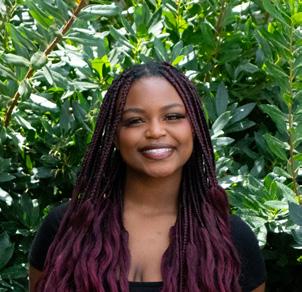






Anwar Team Editor








design by aparna ayyadeVara





ARTICLE BY JUP SINGH • ILLUSTRATION & DESIGN BY HANNA LUBINSKY
ever since coming back from distance learning in 2021, UPA’s internet has been known for being unstable. This causes a poor learning environment as students aren’t able to log into their chromebooks, or the teacher’s laptop won’t connect to the projector. Even though the technology team at UPA has made changes to their systems, why is the Wi-Fi still going out frequently?
Technology Director Tom Guevara didn’t anticipate the scale of which devices were being connected to the network this year, justifying the sudden decline in internet stability. Because of risks of the internet going out during school days for a prolonged period of time, the school and tech team decided to replace outdated equipment with more powerful and
modern connections that would be able to handle the amount of usage the school was facing this year.
“When we replaced the old equipment, the transition from old to newer equipment in the summer did not go well, which
“[the internet going out] aFFects my classroom signiFicantly because I rely heaVily on technology”
had similar issues to Indukuri, but uses a different method to resolve this conflict, using the hotspot on his phone to be able to continue on with his classwork on his personal computer. Ambati also expressed his frustration with the internet as he felt it becomes annoying to deal with these issues at school, especially when trying to learn.
Even though many students use hotspots to continue their connection with the internet, Guevara believes the students and staff at UPA can help this issue from persisting.
-JarJour hernandez
caused more reliability issues,” Guevara said.

Junior Sai Indukuri noticed the fact that students lose focus when the internet goes out.
“Sometimes we are allowed to use our phones to do classwork [when the Wi-Fi goes out],” Indukuri said. “But this kind of distracts some students, me included, as we can easily get off task.”
Not being able to learn material in class can cause struggles at home for students doing homework, or studying for an upcoming quiz. As a result, students are forced to adjust their study habits in order to cope with the situation at UPA.
Sophomore Nitesh Ambati has
“The one thing that does affect everyone is the use of hotspots,” Guevara said. “Hotspots do great damage for everyone on campus.”

everyone is trying to talk at once, it’s hard to hear, and some people might have to repeat themselves. A hotspot “talks” loudly to a small area, and all devices around it try to connect. On the other hand, Wi-Fi works like a radio—one device talks while others listen, and everyone else waits their turn. When there are too many hotspots in the area, devices can’t connect properly to a main Wi-Fi network and the network slows down. Many devices, like iPhones, keep their hotspots on all the time at default, which adds to the congestion.
“One of the things that I would recommend, if we want performance, is for everyone to turn their hotspots off,” Guevara said. “You’re not supposed to use it on campus anyway.”
Staff at UPA have also become aware of the spotty internet connection.
“[The internet going out] affects my classroom significantly because I rely heavily on technology,” Spanish teacher Jarjour Hernandez said. “For example, if I plan to use Gimkits for my class and there’s no connection, I have my students play a lotería game or do activities with mini whiteboards instead.”
These issues force Hernandez to adjust his lesson plans for periods that didn’t have
they will face the same issues.
Even though UPA is still facing inter net issues after coming back from distance learning, there has been signs of improve ment over time. Hernandez noticed im provements in the school network since the beginning of the year, as the connection drops less. He also felt that the network has improved instead of worsened which makes sense because of the equipment change that was made in the summer. It’s only a matter of time before it’s completely stable and consistent.


summer did not go hich caused more reliability issues” ueVara
ARTICLE BY HANNA LUBINSKY AND KRITI PENDYALA • ILLUSTRATIONS & DESIGN BY KRITI PENDYALA
With high school comes many new experienes, from gain - ing more independence from your parents to being in your first relationship. During this time, it’s always useful to have a little extra help, from a wise guardian or adult who can offer advice and support. Spanish 3 teacher Nico Mendoza is one of these people at UPA. Many love his class because of its fun and easy going atmosphere, created by Mendoza’s bright personality. On top of recapping old concepts from Spanish 1 and 2 and learning new concepts, Mendoza often incorporates stories of his childhood or young adulthood into his lessons. These anecdotes provide a new perspective to students and plant a seed of inquiry in their minds.
“I want [my students] to take something of value from my class and I want them to love coming to Spanish class,” Mendoza said.

Mendoza tries not to repeat the stories he tells every year in order to make sure the content isn’t redundant. In his lesson plan, he outlines the vocabulary or basic lesson for the day, and while he is teaching, certain words often remind him of memories of past events that in- spire him to share his own experiences. This allows his stories to remain relevant, teaching his students both Spanish and general life lessons.
“There has to be suffering in life, or there has to be experiences that take you to a place of reflection,” Mendoza said.
One of these experiences happened when Mendoza was a sophomore in high school and met his first girlfriend. After a short period of time, she told him that she was no longer interested in continuing the relationship. Later, he found out that his best friend and his former girlfriend were together. Mendoza believes that it is entertaining to reflect on his past, and talk about the happy moments associated with when a relationship begins. He also thinks it is important to bring up the sad moments, when things might not turn out well.
“That’s something that is painful at the moment, but it’s fun to tell this story, because I see all of you teenagers and I know that there is some type of connection,” Mendoza said.
Once in a while, Mendoza’s students come up to him to share how his stories have impacted their life. For instance, one day
after he had shown a VHL video to his class, Mendoza started telling a story about his mother. He explained how he used to be very rude to his mother, when all she wanted was to take care of him. Eventually, his mother told him that she would stop making him fresh breakfast in the morning as it woke him up. However, after his mother’s death, Mendoza deeply missed his mother and regretted hurting her. After hearing this, one of his students approached Mendoza and told him that he’d had an argument with his mom that morning, and because of Mendoza’s story, he would go hug his mom and tell her that he loved her.

“When we actually share moments of our lives with someone else [we] make a connection [with them],” Mendoza said.
Mendoza believes stories can be incorporated into any subject, not just Spanish, if the teacher cares enough. Stories are an integral part of his teaching style as they allow the class to be less mundane and bridge connections to his lessons. For example, the stories he tells in the first semester every year connect to Poema Veinte, a poem written by Pablo Neruda that Spanish 3 students read and analyze the themes of in class.
“It’s talking about love. It brings something alive inside the classroom, and that is what I want my classes to be,” Mendoza said.
Mendoza feels that telling stories to his class acts as a healing process for him. Although the situations were unfortunate, they make him proud of all the things that have happened and how he has handled them, believing that ‘forgiveness will set you free’. Rather than bringing him down, they help him rise up and accept the pain.
Mendoza always reminds his students that most importantly, they should always be there for their family, because family is everything. He was not always present in his family, especially when he was younger. He wants students to learn from his past mistakes and to not take the more important things in life for granted.


ARTICLE BY MALHAR DESAI • ILLUSTRATIONS & DESIGN BY LAYLA DANIELS
when trying out for a school sport team, coaches look out for certain abilities and qualifications as they choose their players, but what skills and accolades are they looking for specifcally? Although all sports have their differences, most coaches typically look for particular qualities and characteristics in their players when making their decisions.

Matt Buchanan Teacher and Boys Junior Varsity Basketball Coach
#1. Off the ball movement



#2. Player minutes in the previous season
#3. Leadership, court awareness and the ability to
“If a player has one or more proficient skill sets, there is a very good chance they make the team, especially, if on their previous team, they had good minutes,” Buchanan


Tom Guevara IT director and Retired Volleyball Coach
#1. Positive energy and attitude
#2. Leadership
#3. Commitment to improve and to the team
“At both the school and club levels, success isn’t just about individual accolades but how a player contributes to the team,” Guevara said.




Steve Guevara Teacher and Former Volleyball Coach
#1. Athleticism (valued as the highest non-teach able skill in volleyball)
#2. A ready to learn attitude
#3. The f with other players
“The player who is the most valuable, [is the one who] shares themself the most and thinks about the team, not just for themselves,” Guevara said. it





Assistant Athletic Director, Cheer and Track Coach
#1. Dedication
#2. Commitment
#3. Communication
“They’d have to come in with a growth mind set and the idea of being better than they were the practice before,” Davis said.




How losing native languages shapes personal identity and cultural connection
ARTICLE, ILLUSTRATIONS & DESIGN BY HAANIA ANWAR • PHOTOS COURTESY OF CREATIVE COMMONS, PEXELS & UNSPLASH












For those experiencing language loss, the familiar transforms into something uncertain as they lose a part of their identity and culture.

grandparents who only speak Bulgarian. She believes that without a language barri-
friends in large gatherings.
“[My relatives] called me whitewashed” - Nadia Juma
Often, people who forget their language are children of immigrants or those who immigrate to another country at a young age. Due to the assimilative forces of educational pressure, fear of discrimination and cultural norms that drive children of immigrants to learn English quickly, language shift and potentially loss begin as soon as they start school. Freshman Victoria Mihaylov had an experience like this growing up, being the child of Bulgarian immigrants.
“As I started school, I started speaking more English, so I was transitioning between the two and I started forgetting [Bulgarian]” Mihaylov said.
With the constant pressure to learn English, Mihaylov prioritized the need to master it for survival in American schools, setting aside her desire to focus on her own native language. This created an internal conflict, and in a way, Mihaylov believed that she was losing her personal identity through the loss of her childhood language. Mihaylov felt that emotionally, she lost
er, Mihaylov would overall feel more connected to Bulgaria rather than America.
This loss of language isn’t only influenced by schooling, but also children are raised. Junior Nadia Juma was never really exposed to her ethnic language of Swahili while growing up. When Juma’s grandmother first immigrated to America, she believed that knowing English was more important than remembering Swahili as she was part of the working class, and English was perceived as a necessity for economic opportunities and upward mobility. As a result, Juma’s grandmother disregarded Swahili to fit into American society, and Juma’s parents encouraged her to learn more English than Swahili, ultimately causing her to forget the minimal Swahili she knew and learned.

Juma feels that people of color and those learning English as a second language are not fond of remembering their own mother tongue and culture, instead focusing on maintaining compliance to avoid stereotyping and conflict within their community as well as American society. Additionally, while dealing with language loss, people can often feel awkward around those who know their mother tongue. Juma feels this way especially around family and
“I couldn’t understand what they were saying, and they were trying to dim everything down for me so I could understand,” Juma said. “[My relatives] called me whitewashed.”
However, this is not always the case. Sophomore Veera Nirmale has always felt like she has fit into her Marathi culture.
“I think I’m less cool [compared to other Indians], but I think I am fine with that,” Nirmale said. “I like who I am.”
Nirmale isn’t affected by what others have to say about their perspective of culture because she simply

doesn’t care. In a way, she built their own identity with the aspects that she knows and enjoys such as clothing and festivals. For example, Nirmale is very passionate about her roots in Indian culture through food.

“One thing that I actually know is [Indian] food. I love, love food,” Nirmale said. “So then people are surprised when I actually know the names of the dishes.”
Whilst Nirmale has been called terms such as whitewashed, “coconut” (which refers to being brown on the outside but acting like someone white on the inside) and overall being perceived as lacking knowledge about her Marathi culture, Nirmale shapes her identity within America, embracing what she knows best and refusing to let others undermine her self-definition. She navigates the complexities of cultural expectations with resilience, blending her heritage with her individuality.

On the other hand, both Mihaylov and Juma struggle with cultural traditions. Mi haylov feels that not being connected with her language prevents her from getting the full Bulgarian experience. One instance of this is during Bulgarian Liberation Day.
“There’s this thing you wear, it’s a red and white bracelet, and you’re supposed to say something but I don’t really understand it or feel like I can connect to it complete ly,” Mihaylov said.
Mihaylov feels as her challenges of nav igating cultural identity when a language barrier exists are present through this ritu al. The lack of understanding behind words and their cultural significance leaves Mi haylov feeling disconnected from her roots.
Similarly, Juma has faced feeling distant from her culture, which has resulted in her completely skipping a lot of those events.
“I try to avoid [family gatherings] because I just don’t really like go ing,” Juma said. “I feel out of place there.”
Juma hasn’t felt a connection to her culture, especially with the barrier of language, and feels that a lot of the older generations judge her because of it, resulting in feeling complete loss of Juma’s personal identity and ability to recon-


“Even though my parents are Indian, they’re less on me being Indian too and they’ve accepted the fact that I grew up in America.” Her friend group offers her a space where shared experiences and mutual understanding enrich her cultural perspectives.
“For some people language is definitely a part of it, but for me it lies elsewhere, beyond knowing some sounds”
- Veera Nirmale
nect with her culture, also discouraging her from the idea of trying to pursue and learn more about it.
Contrastingly, Nirmale’s acceptance of

Simultaneously, Nirmale’s acceptance of her American upbringing provides freedom to explore her own identity on her own terms. Nirmale, Mihaylov and Juma all say that even when they ask their parents to speak their mother tongue to them, often they end up not doing it because their parents believe that they won’t under-
stand what they’re saying at all. Although all three have tried to reconnect with their language again, they believe that there are other ways to preserve cultural identity, not including language. Mihaylov believes that although language is a big part of culture, there are ways besides relearning one’s language to reconnect and be aware of one’s heritage.
Similarly, Nirmale talks about how culture is different for everyone.
“I think for some people, language is definitely part of it, but for me it lies elsewhere, beyond knowing some sounds,” Nirmale said.
Juma also believes that language is only one part of the puzzle and one can still understand their cultural traditions, values and overall ways without the language barrier.
Despite the feelings of inadequacy and lack of cultural connection that language loss can create, Mihaylov, Nirmale and Juma all agree that there are an abundance of other ways to foster closeness to their cultures. They hope to not allow the missing piece of language to prevent them from trying to regain that closeness.
ARTICLE & PHOTOS BY SOLOMON GHEBREGZIABHIER • ILLUSTRATIONS & DESIGN BY LENA NGUYEN
o you ever wonder where the most breathtaking sunset views in the Bay Area are? The Bay Area is home to so many different mountains, hills and beautiful landscapes that will provide unforgettable memories of the views and leave you stunned. From beaches to dramatic peaks, these locations offer the perfect backdrop for an evening escape. In this guide, I’ll share the top five sunset spots in the Bay Area that you won’t want to miss. I will be ranking these places on a scale of zero to ten based on two categories: aesthetics of the view and accessibility.
The first place I went to was the Sierra Vista Open Space Preserve in Santa Clara County, which has honestly been one of my favorite places to go to watch the sunset. For visibility, I give it a 5/5 due to the unique and unobstructed multicolored sunset views, which it has never failed to provide me with. But there is no public transportation and because it’s up on a high hill, if you have an older car, your car might struggle to produce enough power to get up the hill. So because of this transportation difficulty, I give it a rating of 2/5 for accessibility. A perk however, is that the parking is free.
The second spot I visited was William H. Cilker Park. It is connected to the Guadalupe River Trail, which contains a mini lake in the park that offers a wonderful view of the sunset, broadcasting the ambient lights of the night sky. Personally, I give the view a rating of 3.7/5 because there are some buildings that obstruct the view. However, if those buildings weren’t there, it would be a guaranteed 5/5. As for accessibility, this one is supported by public transportation, which is helpful because you don’t have to waste gas driving there so I give it a 5/5.
The third location I checked out was the Railroad side of Communications Hill. Even though it may not be a well-known spot to watch the sunset, it’s a quiet and calming place to visit. While watching the sunset you will see large trains pass by, which is
surprisingly fun to watch. Just based on the sunset view, I give it a 3.5/5 because a small hill blocks the view and it’s private property so you can’t even hike up there. For accessibility I give it a 4/5 because it’s a simple drive to the location and there is plenty of free space on the side of the street for parking.
The fourth place I visited is Mount Umunhum Radar Tower. I had heard a lot about this location and had been researching it for a while, so I was expecting the view to be flawless. The drive up the mountain was very fun, though it demands a hundred percent of your focus. The trip up the steep mountain at Radar Tower was disappointing because it was so windy and rained heavily. I went back after a few days and experienced the same situation. I would rate the view a 0/5 due to the fogginess and lack of visibility. I also give accessibility a 3/5 because even though it was a vibe to blast music on the way up, it was very nerve-wracking to drive up a mountain during a rainstorm which required full concentration. Once I reached the top of the mountain, parking was not an issue since there was a large lot to park in for free.
Lastly, I went to Tuscany Hills open space. This was by far one of the best places I have ever been to. The view of the sunset was very beautiful and I honestly think the photos don’t do it justice. I give it 5/5 for sunset view and overall appearance. However, I give accessibility a 4.5/5 because parking was difficult, but that honestly depends on the time and day you visit.

My absolute favorite place to visit, and one I highly recommend to everyone, is the Sierra Vista Open Space Preserve. No matter the season, it offers breathtaking views of the city, including glimpses of Oakland and even a bit of San Francisco.




railroad side of communication hills

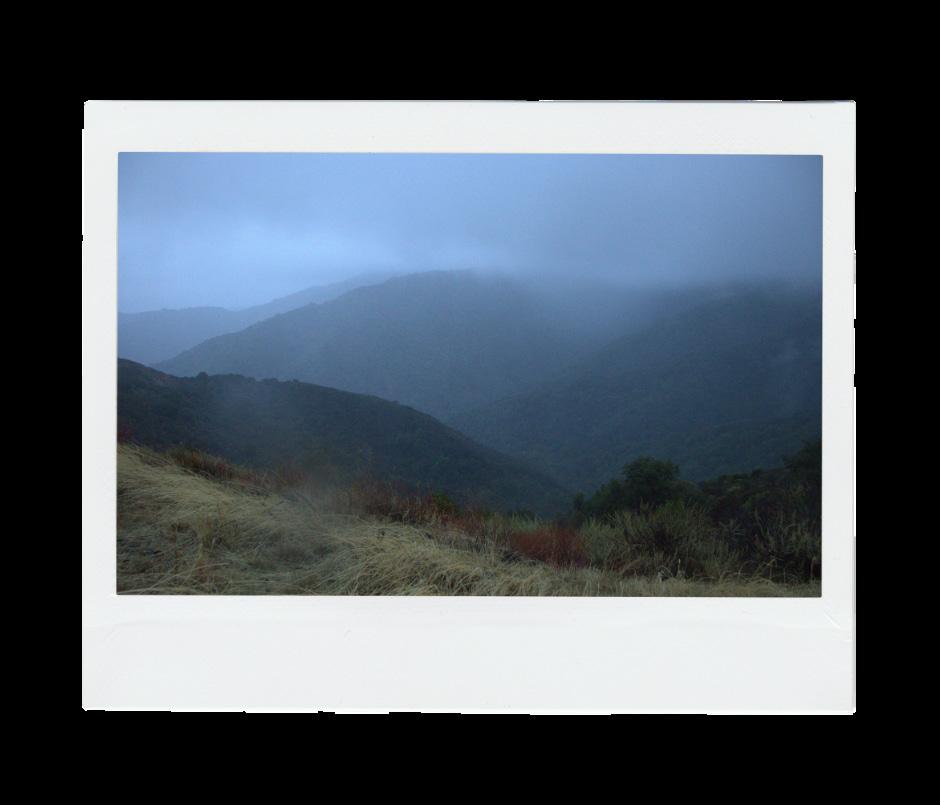

The
impacts of human
activity on Earth’s biodiversity and the younger generation’s role in reducing it
ARTICLE BY LYNETTE TRAN • PHOTOS COURTESY OF CREATIVE COMMONS • ILLUSTRATIONS & DESIGN BY HARSHAD VAIDHYANATHAN
The Holocene or Anthropocene Extinction is the world’s 6th mass extinction, and we are currently in it. Driven by human activity, the extinction is occurring at an estimated rate of 1,000 to 10,000 times faster than the past five natural extinctions. Human negligence has caused climate change through reckless deforestation, pollution, the release of greenhouse gas emissions and more. According to the International Disaster Database, in the last 20 years, there have been around 400 natural disasters worldwide per year—a huge jump from the 100 events per year during the 1970s. Many of these natural disasters are detrimental to fauna; the most recent hurricane, hurricane Helene, claimed over 1.5 million farm animal lives. The rise of such disasters can be attributed to a process all too familiar in today’s world: global warming.
Global Warming
Greatly exacerbated by our dependency on non-renewable energy, the burning of fossil fuels like petroleum and coal facilitates the release of greenhouse gasses into our troposphere where they are trapped, essentially creating a blanket absorbing and re-emitting heat from the Earth and sun to bake us alive. Greenhouse gasses like carbon dioxide are naturally occur- ring and vital for ensuring a habitable
temperature on Earth, but when created in surplus thanks to human activity, they contribute to global warming. According to the World Wildlife Fund, increased atmospheric temperatures from greenhouse gases also cause higher sea levels, which in
“If that’s not enough reason to care, coral reefs are also crucial to humanity; coral absorb wave energy and reduce damage in the event of storms, hurricanes, cyclones and tsunamis, so their loss would be detrimental to the human settlements that they protect”
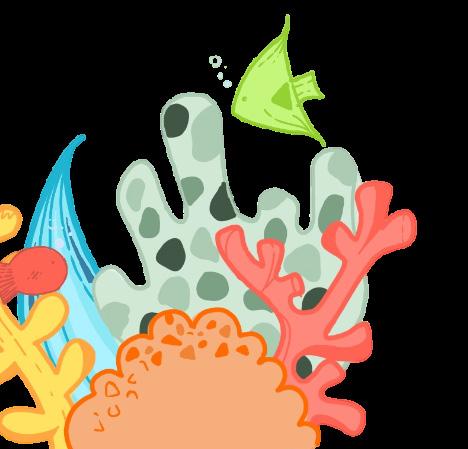
turn increases the frequency, duration and intensity of hurricanes, along with their peak winds, storm surge and rainfall rates.
As stated by the U.S Environmental Protection Agency, rising sea levels threaten marine ecosystems by flooding low-lying wetlands and dry land, eroding shorelines and increasing the flow of salt water into estuaries and nearby groundwater aquifers. This floods beaches and harms coastal rockeries where sea animals breed.
Underwater heat waves caused by a warmer atmosphere result in a phenomenon known as coral bleaching, which threatens marine biodiversity. Stress from prolonged exposure to high temperatures causes coral reefs to expel their symbiotic algae, which makes them more susceptible to disease and water pollution. According to the Coral Guardian, coral reefs are home to more than 25% of all
marine life. If that’s not enough reason to care, coral reefs are also crucial to humanity; coral absorbs wave energy and reduces damage in the event of storms, hurricanes, cyclones and tsunamis, so their loss would be detrimental to the human settlements they protect.
Rising temperatures also alter the habitats of many land animals and disrupt food sources, causing changes in migration patterns and population decline as many animals are unable to adapt to these sudden environmental changes and make them more susceptible to diseases.
The International Union for the Conservation of Nature (IUCN) reports that 40% of the world’s amphibians are at risk of extinction due to the outbreak of Chytridiomycosis, a highly infectious and fatal fungal disease. Scientists from the U.S National Science Foundation found that global warming increases cloud cover on tropical mountains, leading to cooler days and warmer nights, both of which cause the fungus to mature more quickly, release more spores and contaminate soil and water. Chytridiomycosis affects these poor, defenseless amphibians by invading their skin, causing lesions and making them lethargic. According to the Cornell Wildlife Health Lab, Chytridiomycosis has caused the decline or complete extinction of over 200 species of frogs and other amphibians in the past two decades.
Deforestation due to Overexploitation of Resources
According to Our World in Data, the world has lost a third of its forests to industrialization and urbanization. Half of that loss has occurred in the last century alone and it’s our fault. The United Nations Food and Agriculture organization estimates that around 10 million hectares—one hectare being approximately 10000 square meters—of forests are cut down each year to make way for agriculture, housing, pipelines and road building. To put that into perspective, this amount of deforestation is a little less than the size of New Mexico.
This dramatic rate of deforestation af-
fects countless organisms since tropical rainforests are responsible for housing 80% of the world’s biodiversity. Because the plants and animals in each ecosystem are interconnected through complex predator-prey or symbiotic relationships, a loss of one species would have adverse effects for another. In the global South where there are few legislations protecting the environment, the improper disposal of waste, over extraction of natural resources and illegal poachers pose an even greater threat to the endemic biodiversity of each region.
The IUCN identifies habitat loss as the main threat to 85% percent of the organisms on its red list, species that are officially classified as threatened or endangered. These animals include the yangtze giant softshell turtle, slender snouted crocodile, giant sequoia and pygmy hippo.
According to the Pygmy Hippo Foundation, only around 2,000 pygmy hippos remain in the wild due to logging, mining, farming and human settlement that has damaged their natural forest habitat. These animals are herbivorous, making their survival heavily dependent on the availability of ferns, grasses, broad-leafed plants and fruit in their environment. They are also semi-aquatic and require moisture to lubricate their skin to protect them from the sun, making them especially vulnerable to pollution and poor management of natural water resources. Due to their small size and superior palatability to regular hippos, pygmy hippos are also threatened by illegal poaching for the bushmeat market.
Introduction of Non-Native Species
The increased interconnectedness of the international market due to technological improvement in trade has also led to indirect and direct circulation of many plants and animals. When foreign non-native species are introduced into an ecosystem, they can outcompete native species for resources. They spread diseases which native plants and animals have no immunity to or disrupt food webs by becoming top predators, eventually leading to the decline or extinction of native species and an overall decrease in biodiversity and ecosystem health. Often called invasive animals, these organisms typically include green iguanas, burmese pythons, rats and asian carps.
According to the San Francisco Chronicle, nutrias have recently been discovered in the Sacramento-San Joaquin River Delta in Contra Costa County. Typically native to South America, they are highly inva-
sive large semi-aquatic rodents capable of destroying crops and debilitating levees. Though originally brought for trade, after the fur markets’ collapse, many were simply released into the environment and thought to have been entirely eradicated. Turns out not only did a small population survive, but they’re thriving and destroying our beautiful California ecosystem, go us! Due to their burrowing behaviors, they can severely erode and destroy the natural marshlands of California that many other organisms depend on.
Recently in 2024, there has also been a resurgence of the highly invasive Aedes aegypti mosquito. According to the Santa Clara County Vector Control district, these mosquitos were detected in East San Jose, Gilroy, Santa Clara and San Jose near Oak Hill Memorial Park. They’re problematic because they possess the ability to transmit diseases like zika, dengue, yellow fever and chikungunya. High concentrations of

these mosquitos overshadow California’s native mosquito species, which aren’t as harmful to humans.
Foreign plants can be equally as invasive. According to the California Invasive Plant Council, species like fennel, orange hawkweed, madagascar periwinkle and common forget-me-nots threaten native California flora by outcompeting them for resources and overcrowding crops, causing them to die and form thatch. Thatch is a highly flammable thick layer of dead and living plant material that builds up on the soil. If you haven’t been able to put two and two together yet, California is basically the home of wildfires, so this thatch not only acts as a fuel but also sustains wildfires for longer periods of time, making it more likely for these fires to spread.
Luckily however, not all hope is lost. In the 21st century, social media platforms like Youtube, TikTok, Facebook and Instagram have become powerful tools for
quick ly raising awareness for endangered ani mals, helping to spread critical information to a wider audience.

Deng’s rise to fame in 2024 has brought much-needed attention to her species’ critically endangered status. Innocent clips taken of Moo Deng’s playful antics by zoo keepers in the Khao Kheow Open Zoo in Thailand skyrocketed the baby hippo to stardom. Moo Deng, meaning “bouncing pork” in Thai, quickly gained a large following and became a sensational internet meme, leading to a surge in zoo visitors and increased donations to support conservation efforts. The viral success of Moo Deng’s story highlights the innovativeness of the modern-day’s solutions to real-world problems.
It is now up to us to restore what the previous generations destroyed. Joining local government youth organizations to advocate for the protection of the global environment can lead to the passage of new legislation that can help combat deforestation and encourage increased sustainability practices. Rather than relying on conventional energy resources like oil and fossil fuels, look for clean-energy alternatives like wind and solar power. Reduce your carbon footprint by buying from sustainable local farms and avoid single-use plastics at grocery stores.
Don’t participate in mass consumerism and be mindful about your lifestyle. Switching to plant-based diets would be more environmentally friendly because they typically require less land and water to farm, so they would produce less greenhouse gases than an animal-products diet. We only have one Earth so the time to protect it is now. Our survival hinges on whether or not we can maintain our biodiverse ecosystems and as long as we continue to educate ourselves and raise awareness about the importance of nature conservation, we can bring about global cooperation that can help restore ecosystems for future generations.
“St. Chroma” acts as a summary of Tyler the Creator’s career in the music industry. Tyler grew up in Hawthorne, CA and “built a path to freedom” because of a person named P, likely artist Pharell Williams, one of Tyler’s inspirations. He mentions feeling “the light inside” him throughout the song, which refers to his passion towards making music. At the end, Tyler considers retiring from his music career, seen through the lyrics “thinking about my bookend” and “do I keep the light on or do I gracefully bow out.” This is one of my personal favorites in the album, not due to the lyrical significance but because of the instrumentals’ impacts on the album. This is the first song on the album, and the first song that Tyler teased. It set a good tone for and built a lot of hype around the album, especially because of the beat drop.

out the song, he mentions his material possessions in lines like “crib so damn big I need a diaper and a sippy cup” and “when I double park the laf. (LaFerrari)” He also says he’s the biggest artist that’s emerged from Los Angeles since Kendrick Lamar. Tyler ends the song saying he always hides where he’s at and to not believe his ex about anything she says about him, setting the stage for his next song, “Noid.”
In “Rah Tah Tah”, Tyler talks about his self-confidence and wanting privacy in his life outside of being a celebrity. Through-
“Noid” looks at a common issue celebrities deal with: paparazzi and privacy in their personal lives. Tyler is paranoid of invasive and obnoxious fans. “I wanna eat in peace,” Tyler said. The lack of respect for his privacy irritates him, especially towards people who leak his music. This song acts as an important reminder to his fans that celebrities are people as well, not just the character they display to the public in the media. I like the message of “Noid” as it brings more awareness to pri-
vacy issues in celebrities’ lives. Whenever I see videos of paparazzi on social media, or pictures of celebrities from far away, it seems so invasive of their lives and I really don’t get it.
“Darling, I” explores Tyler’s unique perspective on relationships. In the beginning, he repeats how he keeps falling in love. He lists all his different cars and why he loves each one individually and specifically, representing his love for many different girls. The comparison between cars and women can be a metaphor for how Tyler sees women as physical possessions. He finds monogamy unsuitable, wanting to ex - perience different types of love with various people. Tyler thinks about settling down with one girl, but realizes that he’ll leave her in the end anyways.

The song ends with Tyler encouraging someone, perhaps listeners, to branch out and explore, whether different artists or even relationships. To me, the idea of being in multiple relationships sounds immoral
Editor’s Note: The following article contains discussion about an album with explicit content.
ARTICLE BY JAYDEN TRAN • ILLUSTRATIONS & DESIGN BY NADIA HAMILTON • PHOTO COURTESY OF SPOTIFY


and I’m sure mostly everybody shares the same stance. I perceive dating as a deep connection between two people, so to violate that would be harmful for both sides of the relationship. Objectifying women is another damaging act that affects women by projecting the idea that a person’s most important aspect is their body, without thinking about personality or other important aspects.
“I Killed You” sends a message of black culture being shunned in America through hair styles and products. Tyler says that the natural state of his hair was threatening, so he killed it. By “killing it”, Tyler refers to the damage from hair products and tools to style his hair. His natural hair “don’t match their images,” as it doesn’t conform to the standards made by society in America.
“This is my crown,” Tyler said at the end, realizing he should be proud of his hair and culture. Being proud of your culture is important as it’s your background and can bring a sense of pride, knowing you’re carrying a legacy behind you.
“Sticky” has an upbeat rhythm and chorus that matches how Tyler feels about himself—confident. When the beat first drops, feature artist GloRilla begins to rap about having money, being fashionable and not caring about how the guys she gets with already have pre-existing relationships. In the following

verse, artist Sexyy Red sings about her type of confidence: how she won’t lose in a fight. The final feature of “Sticky” comes from artist Lil Wayne. “caught red-handed,” Wayne said, who was likely cheating on another partner. Tyler ends the song with a final verse of his confidence, saying his car is better and how he’s a homewrecker. The different artists on “Sticky” is another metaphor in Chromakopia for seeing different people and having “freedom” in relationships. While being confident is important to your character, being humble is equally as important. Cheating in relationships isn’t something to be confident about, and being too confident transforms into arrogance.
“Take Your Mask Off” shifts in theme and begins describing a kid who suddenly changed, to prove himself to his friends or by the pressure of social standards. He was “ivy bound” and had “little middle class money” but was sentenced to prison for 5-10 years for an un-

known crime.
He’s also described as gay, but would never admit it as “gotta hide how you live and what you really enjoy,” due to the shame projected by others. The next person is a mother who lives a “happy,” financially stable life with three kids, but feels unfulfilled. She “would start all over if we’re keeping it real.” The final victim to Tyler’s exposure of the truth is his younger self. “Paranoid since 19,” Tyler said, since he released his first album at 19. After each confession, Tyler encourages each victim to find themselves and take off the public persona that they’re playing for everybody else. Being true to yourself is important in building relationships with others as you’re able to know how comfortable you are with that person. It can be hard to stay true to yourself, especially if you’re attached to the relationships that you made previously. You would never know if the “friends” you have are harmful to you if you keep convincing yourself that they are “friends”.
grandchild, and as the beat drops, Tyler talks about how time progresses and “the thought of children, it brings me stress.” Tyler says he no longer has as much energy as before, even compared to in his other album tracks like “Sticky” and “Rah Tah Tah”. His friends all have kids and families while all Tyler has are pictures of his cars and clothes. Tyler considers either retiring or “go the other way” and keep making music. I relate to and enjoy the message of “Tomorrow” the most out of any other in the album. Despite still being young, I reminisce about the days where I would come home to see my older brothers waiting for me. Worries about grandparents growing older and the stress that comes with preparing for college resonate with me as well.
“Like Him”, Chromakopia’s most popular song, is instrumentally-focused with minimal lyrics. It tells the story of how Tyler resembles his father, whose presence has been missing his whole life. Throughout, he talks about “chasing a ghost” with no idea how his father looks. Tyler says he wouldn’t change anything, with his mother’s attention and care growing up replacing his father’s absence. He’s proud of where he is today even without his father’s support. At the end, it’s revealed that Tyler’s mom kept his father from him, and he actually wanted to be a part of Tyler’s life. This flips Tyler’s perspective of his parents with his mom being the “hero” and his dad the “villain.”

“Tomorrow” is a slower song about Tyler’s worries of growing older. It begins with his mother telling him she wants a
“I Hope You Find Your Way Home”, starts with Tyler repeating how he’s “slippin” or doesn’t have the same energy anymore. He also reflects on his past song “Hey Jane,” about almost having a kid with someone while he wasn’t ready. In later parts, Tyler also reflects on past collaborations with brands Louis Vuitton and Converse. Finally, he talks about not caring about haters. This whole song acts a reflection of both the album and his career. It’s bittersweet with mentions of his big collaborations in the past and even the negative aspects of his career. However I don’t think this is the last we’ll see of Tyler in his career.


BY JULIANN JAISON


her to become exhausted towards the end of the day and led to frequent naps after school. Although they worked for her, she believes that taking naps could negatively affect your sleep schedule.
According to the Harvard Medical School, although naps can help to re-energize someone, they can also cause a lack of sleep in the night due to the excess sleep received in the day. They also have the potential to raise the risk for diseases such as diabetes and heart disease, since a lack of

slows melatonin production and can lead to sleep disruptions.
For students who must complete homework online at night, the light emitted by their electronic devices could negatively impact their sleep and prevent them from feeling tired at night. Combined with the negatives of light at night, the standard 11:59 p.m. deadline also causes students to sacrifice their sleep in favor of completing their assignments.
In addition to reduced melatonin, extra-

“...In dance there’s different styles, so we have to practice those styles every day and because there’s a lot of them, we spend an hour for each of the styles. [Our practice time] …varies between four to five hours,” Tsang said. Tsang performs a variety of dance styles, including jazz, acrobatics, and ballet, but prefers contemporary and hip hop. Outside of the four to five hours she spends perfecting the styles she practices, Tsang must also undergo solo and group training for her re-
sleep allow her to stay en ergized and focused throughout the day.
“I usually get in bed by 8:30 and I go to sleep at 9:00,” Shaheen said, “... I do volleyball on Wednesdays and Fridays, I do cheer on Thursdays, and youth group on Wednesdays.”
Shaheen cheers for Norcal Elite and plays in a community league for volleyball.




On September 10, 2024, the AP Literature class had a socratic seminar about the novel “The Catcher in the Rye.”
In the novel, the main character, Holden, exhibits an array of negative coping mechanisms after the death of his younger brother. Holden himself, was rather young when his brother passed, a feeling junior Maya Hines can relate to. She was answering one of the prompting questions about dealing with grief and how it affects day to day life.
disturbing experience.” The American Psychological Association describes it as “an emotional response to a terrible event.” However, Hines believes trauma is not something that can be defined in one simple sentence.
“Trauma is something that happens to you that affects you everywhere you go,” Hines said. “It doesn’t necessarily have to be a humongous impactful thing in your life; it can be a really small thing.”
In the middle of November in 2020, her mother became ill with pneumonia, and in December of that year she passed away. Since Hines was unable to see her friends during the pandemic, she became very disconnected from people and emotionally shut down.
“I tried not to move forward for a while,” Hines said. “If I did, I felt like I was forgetting her in a way.”
“I feel like when you’re young and something like that happens to you, you don’t really know how to process those emotions,” Hines said. “It never really goes away.

“Grief is understanding that the things you experienced before aren’t going to happen again, no matter how much you want it to.”
-
It’s always there like something you can just feel.”
From there, teacher Kristin Moore agreed, and the rest of the class moved on to the next question. No one responded because grief is uncomfortable to talk about; everyone just skips past it.
“No one actually knows what happened,” Hines said. “Yes, everyone knows, but no one really knows the details of what I went through, or how young I was.”
Trauma’s lingering presence within the lives of the UPA communityDECK
Oxford Languages defines trauma as “a deeply distressing or
Hines feels like talking to people about her grief hasn’t helped her recover emotionally, as no one is able to relate to or understand her situation. She also avoids bringing up death to not upset others and prevent people from perceiving her through the lens of her grief.
“My mom was just the definition of love,” Hines said. “Since my mom showed me how to love people, I try to project that onto others.”
Contrastingly, sophomore Alyssa Dikovsky feels that talking with her friends about her grief has helped her to move on from her trauma. Her friends helped her get through the death of her uncle in May of 2024.
“Honestly, I didn’t really know how to deal with it at first,” Dikovsky said. “It was really hard to accept that he’s not here anymore, and I always just thought that he would come home and say, ‘Just kidding, guys, I’m not dead.’ But he didn’t.”
Dikovsky’s uncle passed away due to a tumor that caused swelling in his brain and lungs. He had been out of town and was staying in a hotel when her family got a call from one of his coworkers saying he had passed away. Dikovsky was in the living room as her mother yelled out from the
dining room that he had died. She began to cry without even realizing, and was very shocked. If he had known about his illness, he did not let on to it, because he had been telling all of his close family members that he was fine.
“It was the realization for me—that I wasn’t gonna see him again—and that I couldn’t hear his voice again, that he’s gone,” Dikovsky said. “Grief is understanding that the things you experienced before aren’t going to happen again, no matter how much you want it to.”
Dhillon feels like there have been no significant long-term impacts to his health from his treatment.
“The two scariest words: pediatric oncology,” Dhillon said. “At the wing in Stanford hospital, you would see kids that are in so many different states of suffering.”
He feels that in the aftermath, their family is more of a team. They are more in tune to each other, and more willing to help each other when one family member is struggling. He also feels that their trauma and experiences now foster more empathy
“It’s still like that cycle of trauma, where it kind of follows you go over your head, wherever you go, it’s just always there”
- MAYA HINES

without their mother holding them together, Hines feels there is a distance between her and her father. Despite her closeness to her father before her mother’s passing, Hines was much closer to her mother, and feels it has been awkward interacting with him in recent years.
“Now that I’m growing up and changing, there’s no woman figure to talk to,” Hines said. “Of course, there’s always my aunts, but they can’t really replace her, no matter how kind or how present they are.” She feels like she is unable to move

lost children to leukemia or another cancer. That is the thing that scares him the most.
can’t imagine being happy again after that. I can’t imagine being able to enjoy life or appreciate my other kids,” Dhillon said. “I feel like it would just be like this huge empty hole inside of me. If that was gone, I don’t think that would ever be filled. To my deathbed, I know I would still be thinking about him, probably talking to him.”
original diagnosis, and Dhillon still finds it hard to talk about his situation at times. During that time, Dhillon and his wife of ten took turns supporting each other when one of them was especially upset or crying. Sometimes he felt very frustrated, wonder ing why this was happening to him and his family and why they were the ones who had to deal with it on their own.
from family and friends,” Dhillon said.


UPA students elaborate on true experiences and ideas of how gender roles affect relationships
ARTICLE BY APARNA AYYADEVARA• ILLUSTRATIONS & DESIGN BY GAGANDEEP KAUR
Editor’s Note: The following article contains topics surrounding outlooks on relationships and society. Due to such personal topics, names have been changed to protect UPA student identities.
The stigma toward relationship gender roles impacts their foundation and adds insecurity and uncertainty of what is right and wrong, which has limited their growth in society. So why is the varied perspective of gender roles so apparent in today’s society?
How parents influence their
feels this way because of her upbringing and her parents’ traditional roles. Growing up, her mother often stayed at home with her while her father worked as the main breadwin ner. This type of relationship was also true for her distant family.
“I think it’s more masculine for guys to put in that kind of work, that’s just how I was


“I didn’t know what the ell I was doing, I didn’t have a model of what a healthy relationship is supposed to look
How society influences gender role decisions in relationships:
A person’s surroundings affect decisions, and peers and equally.
friend to pay,” Derek said. This narrative shift from what older generations have deemed as unnatural and non-traditional

“I think the person who initiated the date should pay, it wouldn’t be right [if] I planned the date but expected my girl-
equal, why burden another with all the responsibility?”
Patricia doesn’t feel the same way though. In a harsh and constructed society that Indian culture creates, often the idea of a 50/50 relationship doesn’t seem natural and fit into society’s norms. Patricia’s parents’ relationship set the expectation for what she thinks her future relationships should be like, unlike Derek and Jean, who pull away from their parents’ expectations. In her relationship, both sides fulfill their traditional roles, and expect it
How childhood and societal expectations influence

specific expectations for his future ideal partner.
“My parents wanted me to find a traditional Viet girl who cooked and cleaned and had good grades. So there was a lot of pressure for me to find their versions of a perfect girl,” Derek said. “To me my parents ruined my younger perspective because
younger me want- ed my parents’ version of a perfect relationship.”
If a specific image is too strongly pushed on a child throughout their younger years, their overall perspective can be ruined, like for
Derek. On the other hand, it can also cause children to want to resist their parents, like for Jean who wanted to stray away from their parents’ ideology.
“My parents’ expectations can be incredibly stressful. Growing up in a household with a complicated parental dynamic can instill a lot of anxiety about relationships in a young teen,” Jean said.
For some, parental expectations leave teens desiring perfect relationships but for others, it causes them to resent and pull back. Because of this, Derek has a negative view on what his parents’ relationship is.
“While my parents’ relationship rots away, trapped in a home, I want to be able to
express my emotions,” Derek said.
The idea that men should be fully responsible for a relationship stems from a social phenomenon called toxic masculinity, which has been drilled into young men’s lives from a very young age. But rather than trying to dispel and overcome it, society rationalizes and normalizes it.
“I was always taught that I had to be strong and show no emotions,” Derek said.
Derek believes that this mentality is very harsh and creates insecurities. Toxic masculinity instills a harsh environment for young impressionable men and hurts the course of society.
Resonating with this, Jean has always felt that they want to empower others to shy away from traditional roles and learn to be independent.
“Growing up in my household I see the consequences of an unequal relationship on my mother and it makes me wish for a hopeful future,” Jean said.
ARTICLE BY MILES HINES • ILLUSTRATIONS & DESIGN BY LYNETTE TRAN
There is no better feeling thaning with your family and friends, opening presents and hoping that you’ll get the toy or item you’ve been longing for. The anticipation all year round keeps building as the day of cheer approaches. But just how has that feeling changed since you -
iday as one for gifts and -
mas is historically seen as a day to remember the birth of Jesus Christ. Many are in gooding this time of year, as it is often seen as the season of believing
It seems as though when you get older the Christmasly starts to fade and you start to miss certain aspects.

This feeling is commonly referred to as nostalgia. Nostalgia can be described as a longing, desire or love for the past and is often associated with a happy period of time that one would want to experience twice.
Christmas as a younger kid has a magical feeling. Senior Karanveer Singh feels as if this holiday is, and has always been the best holiday compared to all the rest of them.
“It brings everyone together and all that is spread around is love and joyful, everlasting memories through everyone’s hearts,” Singh said.
Reflecting on the spirit of togetherness, Singh shared a cherished moment from his own life that he felt truly captured the essence of Christmas.
“Christmas on a cold morning with the morning fog and hail raining from the clouds was the moment I really began to understand what Christmas felt like,” Singh said.
Similarly, when sophmore Vidhur Handragal was a child, he felt as if his house was more festive and in good spirits around the holidays, and as a result, he was in higher spirits.
“[My parents] used to hide smaller presents, or just cool Christmas-related things around the house and on the tree every day in the days leading up to Christmas,” Handragal said.
In the moment experiencing what now is called memories, no one seems to realize just how quickly your childhood can get away from you.
Eighth grader Kālena Roman enjoys her family tradition of driving through the Willow Glen neighborhoods to see all of the Christmas lights with her grandma. These are the irreplaceable types of memories which create happy moments to look back on, for both Roman as well as her grandmother. As people grow older, the realization that time is truly precious hits, and being able to look back on the fondest times with family is the best gift she believes someone could ever receive. Roman feels as though this time with them is something she will always enjoy as she continues to grow older.
The night before Christmas Eve, watching movies with her family has become a tradition. The feeling of the chill Christmas morning with all of your family opening presents is unlike any other. Decorating the tree with lights and ornaments just makes the moment that much better. Traditions like these can make the season more enjoyable. Annual trips and family gatherings have that much more nostalgia for her family.

When younger, traditions are all one has to hold onto. Different experiences with family like movies or recipes are some of the fondest memories that can be made through traditions, but growing up changes that.

Sophomore Iris Vong feels as if those traditions when younger are what makes up Christmas. Now as she is older, she has more freedom. With traditions less prevalent and her parents less festive, it is easier and more enjoyable to celebrate with friends.
With this, Vong still believes in the fact that Christmas only gets better with age as she’s able to understand the true meaning of the holiday. While the memories made as a child are still looked upon fondly, as she grows up, the freedom is what excites her most. With a chance to make her own new traditions, Vong feels the anticipation for this festive season will only grow as she matures.
In the modern day, Christmas comes with social media which seems to only have a more dramatic effect on the world. Roman feels that social media can help connect with loved ones they are not as connected with. Similarly, Vong interests herself in different TikTok videos that help add to the spirit with extravagant decorations and food to keep her entertained.
While Christmas may be enjoyable when younger, one of the main reasons that the nostalgia seems to fade is the added stress that comes with age. Growing older is a complicated feeling for many. For some it means more stress, but for others it means more freedom to do what they truly want. For high schoolers with finals coming up, it is difficult to focus on the holiday.
Senior Caitlin Earle believes that while the Christmas season still has its magic, she now feels the added weight of academic workload and life in general.
“The magic of Christmas fades for me because of the ‘go go go’ lifestyle that…most of the Bay Area has,” Earle said. “It feels like the day after Christmas it’s working on essays and projects and college courses compared to being able to relish the moment… [which] I was able to do when I was younger.”
With the stress of school and different responsibilities, some things just don’t feel the same for Earle. With values constantly changing, there also aren’t as many materialistic things that can give someone the Christmas rush. Presents become more about what you need and family traditions may not be as prevalent. However, Christmas nostalgia is extremely specific to your childhood and some have stronger opinions than others. Regardless of the situation, it is clear that Christmas and this magical season is what you make of it.
























Fried Chicken combo at Jackie’s Place which includes 3 pc fried chicken, mac and cheese, and french fries.
Tasting the top five African-American-owned restaurants in the Bay Area
ARTICLE & PHOTOS BY
MITACHEW
•
WSHELBY BYRD & BEZA
ILLUSTRATIONS & DESIGN
BY
NEHA JRAL
ith an ethnically diverse population, the Bay Area is home to many black-owned restaurants. The literal definition of soul-food is a type of dish “traditionally associated with African Americans of the Southern U.S.” But to us, it’s heaven for the taste buds. With so many available options in the Bay Area, we chose three noteworthy soul-food restaurants and determined which is the best one. We evaluated them based on the appearance of the restaurant (out of two), taste of food (out of three), customer service (out of two), quality of meat (out of two) and how affordable it is (out of one). In order to rate fairly, at each restaurant we tried their combo meals which usually consisted of two to three types of meats, two to three side dishes and a drink.
to dine-in, and one to order from the bakery or to pick up food to go. The restaurant was quite vast with stairs that led to the bathroom, a gorgeous cocktail bar and a spacious open seating area. Once we entered the dine-in line, we were greeted by delightful staff that immediately took our names and seated us. There was a QR code for the menu, where you could order and pay online. We ordered the Uncle Greg’s Ribs Plate which consisted of two sides of our choosing: beef chili beans and mac and cheese, two meats, chosen by the chef: ribs and southern boneless fried fish, cornbread and a drink: cherry Kool-aid, all for around $40. The food came almost 10 minutes after we paid. The portion sizes were unlike anything we have ever seen; the ribs were almost the size of our hand. The beef chili beans and mac and cheese came filled to the brim. Starting off with the ribs, they came in two pieces, perfectly charred and grilled in the backyard of the restaurant. When we took a bite, we were immediately hit with a smoky flavor that overtook our mouths. The meat was so tender, it almost fell off the bone. We added some of Jackie’s BBQ sauce, and it tasted immaculate. The BBQ sauce didn’t clash with the flavor of the meat, but rather enhanced it. The meat was so juicy and was seasoned perfectly. Honestly, we had no complaints. The fish on the other hand was overly crusted, and the breading overpowered the dish, leaving little fish flavor. It was seasoned well and the fish was soft, but the breading was all you could really taste. Moving on to the sides, the beef chili beans included beef brisket, which added an aromatic, smoky flavor. The beans weren’t undercooked, were perfectly soft and the beef brisket was quite a unique combo that connected all the flavors of the dish into one perfect bite. The mac and cheese arrived piping hot, with a rich, cheesy and gooey texture. However, the mac and cheese lacked the crisp layer of cheese on the top, which we usually prefer. Nonetheless, it was perfectly cooked and had a homemade flavor. Next up, the cornbread was amazing. It had the perfect yellow color, crisp on the edges and had a corny flavor when you took a bite. Last but not least, the cherry Kool-aid was crisp but it was overbearingly sweet and tasted quite like cough syrup.

Jackie’s Place is a women-led, family-based business. Their restaurant motto is “Don’t forget your roots,” which speaks to how most of Jackie’s recipes are passed down through her family. Arriving at the restaurant and looking from the outside, it was surprisingly huge for being located in the middle of downtown San Jose. One slight flaw was that there was almost no space to park. Upon entering the restaurant, there was a black and red theme around the walls, chairs, couches and even the menu. There were two lines: one
Appearance of the restaurant: 2/2
Customer Service: 2/2
Taste of food: 2.5/3
Quality of meat: 2/2
Affordability: 1/1
Overall ranking: 9.5/10
Mama Kin is a soul-food restaurant, bar and live music club located in downtown San Jose. On the outside, it looks more like a cafe, but upon entering, it was massive. There was a dim, gloomy vibe in the restaurant with only purple LED lights, but lots of open windows and a big disco ball on the roof. It was two stories, the bottom level had the bar, a live music band and tables and the upstairs mainly consisted of couches for seating. The restaurant had an overall rustic vibe. It was pretty crowded, but we were seated quickly. We ordered Grandma’s mac and cheese, Mama Kin’s baby back ribs, southern fried chicken and cornbread muffins with chipotle butter. In total, this came out
to $48. The food came in about 25 minutes, which was a decent wait. Starting off with the meats: baby back ribs and southern fried chicken. The ribs were medium-sized and were absolutely drenched in sauce, which we loved. The meat was tender and juicy, but the smoky flavor wasn’t there as much as we wanted it to be. The fried chicken was perfectly crispy and fried to perfection. The chicken could have had a lot more seasoning and tasted similar to Kentucky Fried Chicken. For the small sides, the Grandma’s mac and cheese was perfectly crispy on the outside, just how we like it. It included four cheeses and was very gooey. The first bite was a burst of flavor, from the cheese to the cajun seasoning. The mac and cheese was definitely the best item. The cornbread with chipotle butter was something we had never tasted before. It was crispy and hot with a nice tangy flavor, but when dipped into the chipotle butter, it was quite different, mixing savory with sweet, but it tasted immaculate. The buttery sauce mixing in with the cornbread made it super moist.

Appearance of the restaurant: 2/2
Customer Service: 2/2
Taste of food: 2/3
Quality of meat: 2/2
Affordability: 1/1
Overall ranking: 9/10
Walking into the restaurant, we immediately felt the welcom ing aroma of soul-food, already making our experience memora ble. JJs is a classic soul-food restaurant in San Francisco. They serve a variety of chicken, mac and cheese, okra, fish, pickles, yams, collard greens and so much more. It is a small restaurant located on the corner of an old building. Not many people come in to sit down and eat, due to its unwelcoming location in the city. However, many still order to-go due to the amazing food that is awaiting them. The quality of the food is known to be very high and we could tell that it was made with time and good recipes. The first plate we tried included fried chicken, mac and cheese and collard greens. The chicken was very well seasoned and was cooked just right, though it became a bit dry if you waited too long to eat the food. The taste of the mac and cheese was creamy and soft on the taste buds, with an amazing cheese pull. However, if you don’t like American cheese, it might not be the best for you because there were several types of cheese used in the dish. The collard greens were very moist, seasoned well and cooked just right. The consistency of collard greens should be very specific. It comes from the way that they are cooked, and how high the temperature is. If cooked incorrectly, it will taste like wet greens which is not enjoyable for most people. However, when cooked at the right temperature and for the right time, it can make all the difference. These collard greens did not disappoint. For the sec ond plate, we had fried okra with Crystal hot sauce drizzled on top of it. It was crunchy, chewy and savory all in one. This food took about 45 minutes to arrive (keeping in mind it was very busy that day), and the total cost was $65. This is one of the highest prices out of all the places that we had gone to, yet we still believe it to be affordable because their portions were large enough to
feed about two peo ple from just one plate.

Appearance of the restaurant: 1.5/2
Customer Service: 2/2
Taste of food: 2/3
Quality of meat: 2/2
Affordability: 1/1
Overall ranking: 8.5/10


Uncle Greg’s Ribs Plate at Jackie’s Place consisting of beef chili beans, mac and cheese, ribs, southern boneless fried fish, and cornbread.
BY ALANA ESTRADA
The Bay Area is home to a great deal of rich history, and many remnants of the past are still alive and thriving today. I visited three different historical locations in the Bay Area. Each location will be ranked out of five based on entry price, tour duration and the quality of the tour.
Firstly I visited Filoli, a 16 acre estate in San Mateo filled with stunning gardens and breathtaking views. William Bourn, the first owner of the house, wanted to build the home as a retirement place for him and his wife as they moved into the house in 1917. He named the property after his personal motto, “Fight for a just cause, Love your fellow man, Live a good life.” He used the first two letters of each sentence to create the name Filoli. He also felt the need to dedicate the mansion to connecting people to the beauty of nature and to appreciate the world around them. After the Bourns died in 1936, the Roth family lived in the house until 1975, when it was donated to the National Trust for Historic Preservation. Later on, the Filoli center was created and gained the rest of the estate from the Roth family.
Upon entering the property, I saw the stunning house and equally beautiful gardens. The gardens were filled with gorgeous flowers including roses, borages, paperwhites, hellebores, camellias and violas. Trimmed hedges lined the borders of the garden and house. The mansion was furnished with paintings, furniture and other everyday items that made it feel as though you were truly living in the 1920s. Each room was uniquely decorated with many floral designs that were incorporated in the floral vases, furniture, curtains and tapestries. The tour we did was self-guided, which meant we could stay as long as we wanted to admire the house and its gardens. The house and garden are relatively large so I would
food. The price for the tour was more expensive than any other with a cost of $31 for children and $41 for adults, however it was definitely worth it. I was completely awestruck by the views and rooms within the house. I would rank this house 4.8/5, with its only flaw being its more expensive pricing, but if you're willing to spend a little more money it’s an absolutely amazing way to spend an afternoon.
Second up is the Camron-Stanford House, which was built in 1876


spend at least an hour on the property, but you could easily spend more than that because there are also special programs throughout the day. There is also a restaurant with a relatively large selection of
and resides in Oakland. During its time period as a residence, five different influential families lived in the house. The owners included the Camrons, Hewesses, Bartletts, Standfords and Wrights. In 1907, it became the first museum in Oakland when the city purchased the house. Later on, a movement was created called the Camron-Stan ford House Preservation Association, a group of citizens determinedto restore the house. Restorers spent seven tedious years bringing back the house and because there were no pic tures of the interior, they had to carefully study 19th century styles in other local houses.
Descendants of former fam ilies who had lived in the house donated items back to the house. Other items were loaned from other in dividuals or in stitutions. The house opened to the public in May of 1978 and has remained open since then.
Altogether, the tour was really enjoyable. Each room had a QR code that led to lengthy slides of the history for that

room. The QR codes also talk about special events that happened in the room relating to the owners. A great example is a picture of Franklina Bartlett on her wedding day. Her picture is surrounded by shell pieces inside the frame. The slides also cover different artifacts and how they ended up in the house. We viewed the fami-
in the 1990s when the city acquired the former house.

ly parlor, receiving parlor, art gallery, dining room and finally the veranda and garden. The entrance fee to do a self guided tour of the house was five dollars for each person. The tour takes about 30 minutes and you can freely roam around the rooms and spend however much time in each room. Most days there is a docent on site to answer any questions you may have. I’d rank this tour an overall 4/5 because the tour lets you look at all the rooms. However, there was no docent to tell us about the site. We had to use the QR codes to get the information about each room individualy. The property is pleasant with its view of the lake behind the house and its garden. However, the top floor consists mostly of offices and is not open to the public.
Interestingly the Fallon House had many rooms open and you were able to tour the entire house. It's also a popular spot for schools to go on field trips. The tour was informational and explained the purpose of each room. Both the Adobe house and Fallon house had intertwined histories that were ex plained in great detail. The tour guides did a really good job of telling us the information. The fee was $12.50 for the tour per person, with it lasting 90 minutes. The tour was a 3.8/5 since it was really informational. Not only did we visit the Fallon House, we were also able to enter the Peralta Adobe across the street. The Adobe house had lots of different objects that tour guides let you touch. The Fallon House also usually has interactive stations set up for when the children come from schools to visit the house. Unfortunately, in my experience it was hard to get tickets because the website states that drop ins are available on the weekends. However, when we showed up to the property, it was closed and there was a sign outside that said only appointments were available on weekends. We ended up purchasing tickets online, so if you do decide to go I would suggest buying tickets beforehand. However, this may have been due to the holiday season.


Lastly, the Fallon House in Downtown San Jose was bought by Carmella and Thomas Fallon in 1854. Later, Sergeant Luis Peralta purchased the land, which extended all the way to the Guadalupe river and came to be known as Peralta’s Orchard. Eventually during the 1860s, the Fallon’s turned the property into a thriving pear orchard in which later photos from the 1880s show the property covered by mature trees. The house ended up vacant from 1878 to the 1900s, according to City Directories due to the fact that Thomas was traveling and later died in 1885. His children Anita and Arthur were later named the heirs to the property. In the early 1900s, the property was divided into five lots and finished development in 1911. The house later became the Italia Hotel and was open until the 1960s, operated Manuel G. Pereira.

Pereira finally shut down the property

Overall, my experiences with each house were unique and different. Each house has its own flare to it as well as pros and cons. I really enjoyed the places I visited and felt so intrigued to learn many new things. My personal favorite house to visit was Filoli, because the gardens were so beautiful to look at and completely astonished me. The property was stunning and I honestly could have stayed there longer. However, all the houses were definitely worth visiting if you’re a big fan of pretty views and intricate history.
Critiquing three widely known boba shops in the bay
ARTICLE
ILLUSTRATIONS
boba or bubble tea originated in Taiwan but became popularized in Asia, especially China and other neighboring countries during the early 1980s. The term “boba” has been referred to and known as a cold, sweet, teabased drink that can have an assortment of flavors and toppings. Popular combinations are usually the mix of milk and tea, or fruity flavored tea. Many people add brown sugar tapioca balls, which have a chewy and soft consistency or other types of jellies, which tend to vary in texture from hard to soft. These toppings frequently require a large thick straw to be able to drink out of. Over the last few years, the drink has spread worldwide, especially in western countries such as the United States and Australia. In the 1990s, Taiwanese immigrants began to introduce boba in their restaurants in California, and some of the first boba shops can be traced back to Arcadia in Southern California and Cupertino in Northern California. The drink has now become a staple in Asian culture, and you are likely to find it everywhere you go in Asia, and even the Bay Area. Today, there are thousands of boba shops in the bay, and it seems like new shops are constantly opening every month. So, where is the best place to go to for boba?
Teaspoon - 8.5/10
Teaspoon has 17 locations in the Bay Area. It’s a franchise-based business that sells a variety of boba drinks. Their menu includes teas, coffee, smoothies and lemonade. We went to the one located in Milpitas. The restaurant had a yellow theme, with cute decorations along the walls that included bright white patterns that matched the vibe of the restaurant. It also had a cute claw machine where you could play games. It was an average-sized boba shop with a tablet to order your drinks. They also have customizable options for your drink based on sweetness and ice level, but only serve one size of cups.
Beza - 4.5/5
I ordered the classic Thai tea with classic boba pearls and regular sweetness for $6.50. The drink was ready in under five minutes. It
came out in a beautiful orange gradient color. I flipped it upside down, poked a hole in the plastic film and took a sip. To my liking, the Thai tea was the perfect temperature, very smooth and velvety and the flavors melted on my tongue. Though the tea’s flavor was fragrant, the aftertaste was quite bitter because I could taste the tea leaves.
- 4/5
I ordered the “Strawberry Sangria,” which is a black tea that is infused with their house strawberry marmalade, and added tapioca pearls to it. The cost came out to $6.50. I also adjusted the sweetness level to 50 percent, since I don’t like when drinks are overpoweringly sweet. I would recommend this for others if they also dislike large amounts of sweetness because most boba tea places tend to include a lot of sugar in their drinks. This goes for both milk teas and fruit teas, since sometimes the tapioca pearls or other toppings can make the drink even sweeter than it already is. This drink is classified as one of their signature drinks that can only be found at Teaspoon. As I took a sip, I could immediately taste the strawberry marmalade. It was sweet, but not too strong, and it had a slight gelatinous texture that was strange but quite yummy. The tapioca pearls had a chewy consistency and the center of the pearls weren’t hard at all. To me, it was the perfect texture when it comes to boba. The black tea itself wasn’t anything crazy, but it was simple, and helped balance out the taste of the strawberry topping. This made it a refreshing and delicious fruit drink that I would recommend for those that like fruit-flavored things.
Tisane has only one location in San Jose, and it stands out for its unique boba drinks and trendy boba lounge, which offers a sophisticated atmosphere. Tisane is located on E Capitol Expy, inside the Evergreen Commons plaza. Upon entering, the store itself had dim lights and there were couches along the restaurant. There were purple LED lights everywhere and a huge TV, giving a clubhouse feel. The menu was on
the TV and included pictures of the drinks with a description of each drink. There were two self-serve kiosks to order from, that included customizable options for your drink based on sweetness and ice level.
Beza - 5/5
I ordered the “Gram Brulee” with honey boba for $7.50 and changed the ice level to 50%. It consisted of brown sugar milk tea topped with Crème Brûlée crema and crushed honey graham crackers on top. The drink came in about five minutes. This was an interesting drink due to the graham crackers on top, but it was one of the best boba drinks I’ve ever had. The Crème Brûlée crema mixed with the graham crackers added a taste similar to s’mores. It was very smoky but still sweet. The tea itself was perfect since the flavors combined so well together. I would definitely order this again.
Aubrey - 5/5
For $6.50 I ordered the “RPM” which stands for red guava, passion fruit and mango. It was a Ceylon black tea-based drink, infused with mango puree and paired with mango jelly shaped like yellow stars. I also decided to adjust the sweetness of the drink to 50% and get less ice. They had the option to add additional toppings, but I didn’t, since the drink already came with jelly. The sweetness from the jelly and tartness from the fruit was a nice combination and mixed well together. When drinking it, it felt very refreshing, and not too sugary. The mango was tasty, but wasn’t overpowering in flavor, so you could taste it with the black tea. The tea flavor itself wasn’t the strongest, so the drink didn’t have too much caffeine, which is what I prefer. Even though the drink was quite simple, it’s probably one of my favorite tea drinks.
7 Leaves Cafe has six locations in the San Jose area. It’s known for their cozy welcoming vibe and being a very popular study cafe. We went to the one located in the Southgate Shopping Center on Blossom Hill Rd. The cafe was big, with a table area locat-
Classic Thai Tea
$6.50 fragrant flavor bitter aftertaste


Classic Thai Tea Strawberry Sangria Green Thai Tea
$6.25 black tea with strawberry marmalade
Gram Brulee RPM
$7.50 brown sugar, Creme Brulee & crushed graham crackers


$6.50 black tea with red guava, passion fruit & mango
$6.05 with sea cream super bitter
ed on one side, couches in the middle and booths on the other side. The store itself had bright lights and good music. The aesthetic of the store was very pleasant and had a relaxing feel, almost like a cafe. It seemed like a decent place for people to come and be able to study while enjoying a drink. They have an extensive menu serving bakery snacks as well. To place an order, you must go to the front to the cashier. They had a variety of items from coffee, to tea and even dessert. You also have the ability to customize ice level, sweetness, and even add-ons that include aloe vera, custard pudding, grass jelly, honey boba and sea cream.
Beza - 2/5
I ordered the classic Thai Tea with 100% sweetness with sea cream for a total of $6.05. The drink was ready in three minutes. The color of the drink was dark orange with a bright white color of the sea cream. As I took a sip, the sea cream was deliciously salty but interestingly,

$6.25 green tea mixed with Thai milk tea
the Thai Tea was super bitter and had a very sour-like aftertaste. When I mixed the drink, the flavor tasted a little better but wasn’t as good as I expected. The drink overall tasted disappointing.
Aubrey - 3.5/5
I purchased a large 24 oz Green Thai tea, which was a combination of green tea notes and the classic Thai milk tea. Again I made similar adjustments to the drink, like I did with the other boba places: 50% sweetness and less ice. The total was $6.35 for a large sized cup. This drink is one of 7 Leaves’ most popular items, and for a good reason. The Thai tea flavor was sweet and delicious, while the green tea aspect wasn’t overpowering at all. The green tea flavor was subtle, but still gave a nice kick, supplying a pretty olive green coloring. Personally, I really enjoyed the drink’s simplicity as it was a nice sweet treat. Compared to the regular Thai tea, the taste was fairly similar, but the green tea made

my drink taste more refreshing and floral. I actually liked both Thai teas but preferred the green tea twist more. Although I only got 50% sweetness, I felt like the drink was still fairly sugary, which I didn’t like. But for those that enjoy quite simple drinks without too many complexities in them, 7 Leaves Cafe is a good choice.
Overall, after visiting all three of the boba shops, we concluded that our favorite boba place was Tisane due to the unique variety of flavors, reasonable pricing and the delightful taste. The ambience of the store was very lively and it had super cool decorations and lighting, especially during night time. The shop is an extremely popular hang out spot for teens as well, creating a lively atmosphere, but lines can get long. Nonetheless, even though the store is frequently crowded, the service is always speedy and excellent. For these reasons, both of us have decided this was the best boba place, and we would recommend others to try it as well!
